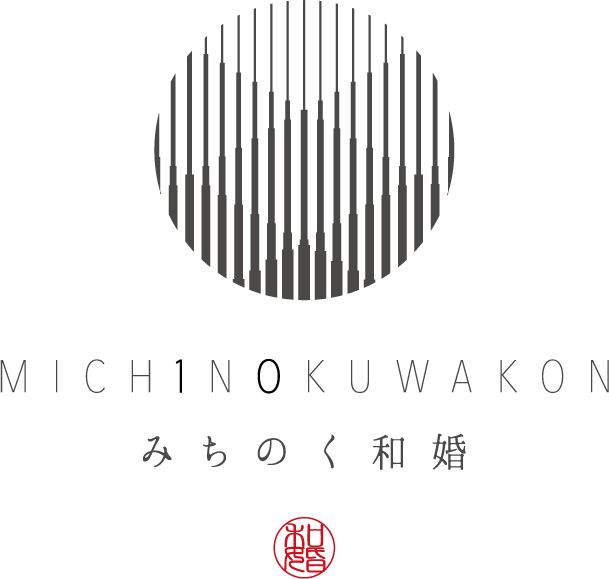Motsu-ji Buddhist Wedding Ceremony
Traditional Japanese wedding ceremony in Motsu-ji main hall with traditional kimono
Japanese-style wedding ceremony at Motsu-ji Temple
Why not hold a solemn Buddhist ceremony at Motsu-ji, a World Heritage Site in Hiraizumi, Iwate Prefecture?
Surrounded by the beauty of a Japanese garden that recreates the Pure Land Garden of the Heian Period, a Buddhist ceremony and Japanese wedding ceremony is a special day to celebrate the beginning of life.
Buddhist wedding ceremonies and Japanese wedding ceremonies with traditional white kimono or colored wedding gowns.
Cherry blossoms in spring, irises in summer, autumn leaves in fall, snowy landscape in winter, and a Buddhist ceremony and wedding in kimono at Motsu-ji Temple, which is beautiful in all four seasons.
A Buddhist ceremony and Japanese wedding ceremony at Motsu-ji Temple is a unique and special experience, performed in the solemn atmosphere of a World Heritage site with more than 900 years of history.
The couple pledges their eternal love in a time-honored traditional manner under the watchful eye of Kanjizaio-in.
A Buddhist and Japanese wedding ceremony in harmony with the natural beauty of the four seasons will be a lifetime memory that will be deeply etched in the memories of the couple and their attendees.
Michinoku Wakon offers a Buddhist wedding ceremony at Motsu-ji Temple, a sacred space with over 900 years of history, for a special day for you and your partner.
Motsu-ji Temple Japanese Wedding
Cost and Application
A thousand-year vow woven by the Pure Land Garden
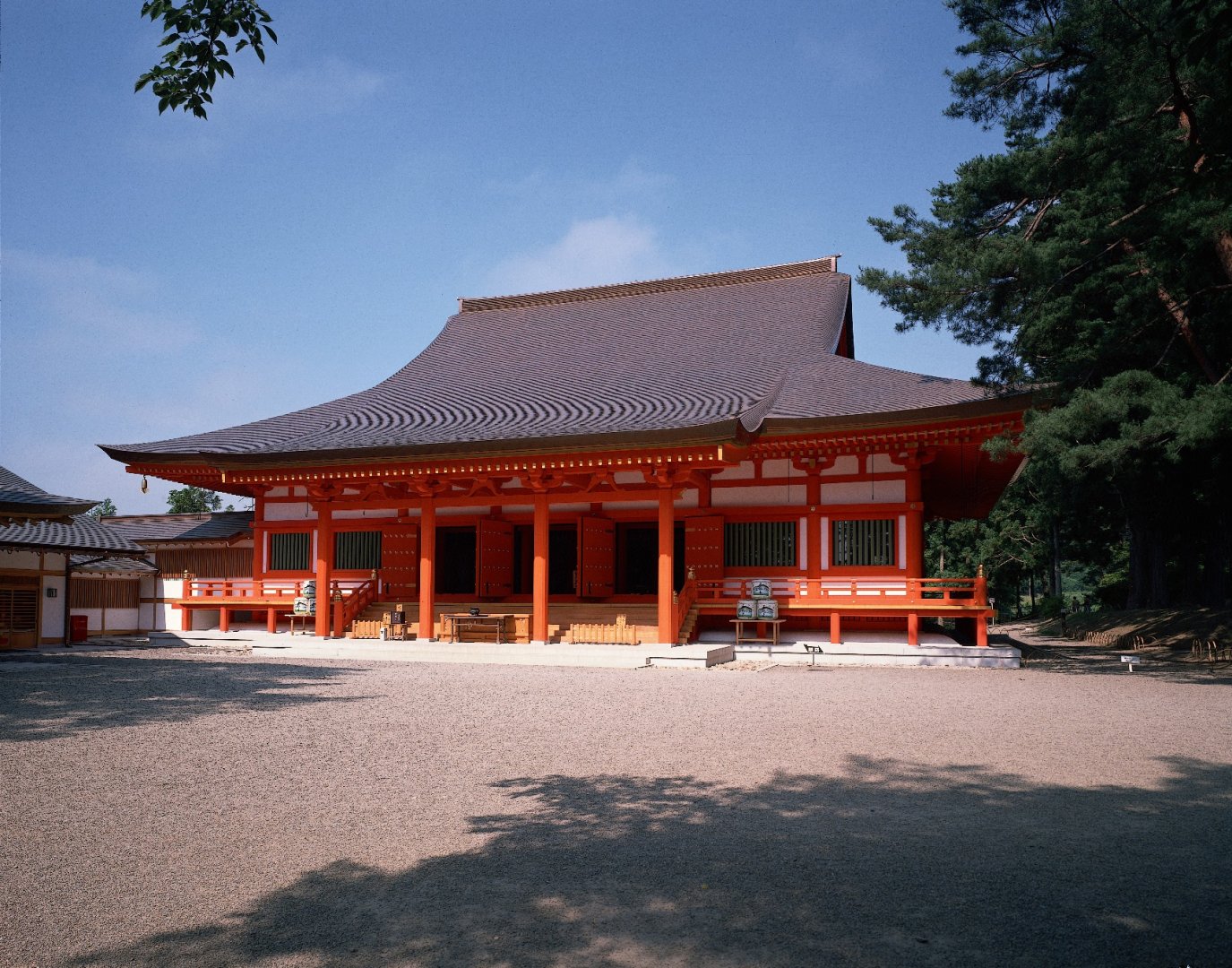
The Buddhist wedding ceremony at Motsu-ji Temple is a unique and special experience, performed in the solemn atmosphere of a World Heritage site with over 900 years of history. Surrounded by the Pure Land Garden, designated as a special place of scenic beauty by the government, the couple pledges their eternal love in an ancient and traditional manner.
At Michinoku Wakon, a formal Buddhist wedding ceremony in the main hall of Motsu-ji Temple and a kimono wedding ceremony in harmony with the natural beauty of cherry blossoms in spring, irises in summer, autumn leaves in fall, and snow in winter will provide a lifetime memory that will be deeply etched in the memories of the couple and their attendees.
Flow of events leading up to the wedding
-
Select a shrine or temple and make a reservation or application
Please select the shrine or temple where you wish to hold your wedding ceremony and make a direct reservation. Kindly submit the wedding application form to the shrine or temple. Depending on the shrine or temple, a personal consultation may be required, so please be sure to confirm the details in advance.
-
Apply to us
Please read the terms and conditions enclosed in the materials we send you. If you agree to the terms and conditions, please fill out and sign the formal application form and return it to us ( Sorachine Harmony Co., Ltd.). Please transfer the application fee of 100,000 yen to the designated account.
-
costume selection
Please visit our partner bridal shops to select your attire. Reservations through our company are required for viewing before finalizing your selection. Attire for your guests can also be chosen at partner shops near their residence.
-
Meeting, option selection, beauty rehearsal
We will proceed with the wedding meeting by e-mail or phone. We will also suggest various options such as the bride's bridal gown and wig, photography (photos and movies), and post-wedding dinner, according to the couple's wishes. We can also arrange for a wig fitting along with costume selection at our affiliated costume stores nationwide. Beauty rehearsals can be held the day before the wedding, so there is no need to come here just for the rehearsal.
-
Payment
Final items and billing amount will be finalized and an invoice will be issued 2 to 1 week prior to the wedding. Fees must be transferred to the designated account at least 2 days before the wedding (2 business days before the financial institution).
Motsuji Temple|Buddhist Ceremony Flow
-
entering a Shinto shrine or Buddhist temple
Preceptor (officiant) and bride and groom enter the hall.
-
adoration
The preceptor climbs up to the rite board and makes three prostrations.
-
Kangen/Keishaku/Kyobo
It is a statement of repentance and correction of wrongdoings and mistakes one has committed in the past, hoping for the coming of Buddha.
-
ceremony of attaining manhood
The sake cups are served three times, in small, medium, and large sizes, which are equivalent to the three samsangyudo in the Shinto ritual.
-
Exchange of rings/award of prayer beads
Those who wish to do so exchange rings. After the exchange of rings, beads are placed in each other's palms.
-
conferral of a posthumous rank
The bride and groom say their vows to become husband and wife.
-
certification award
The certificate is given by the preceptor and placed under the groom's arm.
-
oath
The bride and groom read their vows.
-
incense offering
The groom and bride burn incense in that order.
-
pleasures of a pious life
The preceptor will give a congratulatory address.
-
leaving the hall
Preceptor (officiant) and bride and groom leave the hall.
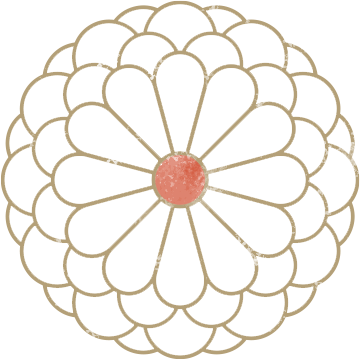
What is Motsu-ji Temple? History and Origin

Founded by Ennin (Jikaku Daishi) around 850 A.D., Motsu-ji Temple is one of the representative temples of the Tohoku region and was extensively developed by Fujiwara no Motohira, the second generation of the Oshu Fujiwara clan, in the late Heian period. It was once a large temple with more than 500 halls and towers, but today only a vast garden and a few halls remain.
However, the existing Pure Land Garden is designated as a national Special Historic Site and a Special Place of Scenic Beauty as a valuable remnant created based on the "Pure Land" philosophy of the Heian period. The garden, centering on the Oizumigaike Pond, represents the world of the Pure Land of Paradise at that time, and its solemn atmosphere can still be felt today.
At the end of the Heian period, the Oshu Fujiwara clan, which ruled this area, positioned Motsu-ji as the central temple of Hiraizumi, along with Chuson-ji, and built a series of luxurious buildings. Unfortunately, many of the buildings were lost in a series of fires, but excavations since the 1950s have gradually revealed the temple's original appearance.
In 2011, Hiraizumi was registered as a UNESCO World Heritage Site along with Chuson-ji and other temples as part of the "Cultural Heritage of Hiraizumi," and its value was internationally recognized. Today, the beauty of the garden, which embodies the Pure Land philosophy, and the excavated remains make Hiraizumi a precious place where visitors can experience the Pure Land world of the Heian period.
World Heritage (cultural, natural, etc.)
Registered as a World Heritage Site in 2011 as "Hiraizumi's Cultural Heritage
History of Eternity
A famous temple with a history of more than 1,100 years since its foundation in 850.
beauty of the four seasons
The view of cherry blossoms in spring, fresh greenery in summer, autumn leaves in fall, and snow in winter is spectacular in every season.
How to get to Motsu-ji Temple
| address (e.g. of house) | 58 Aza Osawa, Hiraizumi, Hiraizumi-cho, Nishibai-gun, Iwate 029-4102 |
|---|---|
| public transportation |
|
| Access by car |
|
| parking lot | There is a town-owned parking lot adjacent to Motsu-ji Temple (330 cars) [Fee] 300 yen for small cars, 600 yen for microbuses, 750 yen for large buses *A 2-minute walk from the parking lot to Motsu-ji Temple *Public transportation is recommended due to crowding during the tourist season. |
Detailed route to Motsuji Temple
- TAKE THE JR TOHOKU SHINKANSEN TO "ICHINOSEKI STATION" AND TRANSFER TO THE JR TOHOKU MAIN LINE
- Get off at Hiraizumi Station and walk about 10 minutes or take the Hiraizumi Rurun bus to Motsuji-mae (about 5 minutes).
- Arrive at the gate of Motsu-ji Temple (purchase a ticket)
- Arrive at the main hall of Motsu-ji in about 2 minutes on foot.
The Hiraizumi Rundurun tour bus operates only on Saturdays, Sundays and national holidays from April 12 to November 30, 2025.
Bicycle rentals and cabs are available at Hiraizumi Station.
Michinoku Michinoku Wakon can arrange a shuttle bus for your wedding day. Please contact us for details.
| name | Motsuji Temple |
|---|---|
| OFFICIAL HP | https://www.motsuji.or.jp/ |
| Available Time for Ceremony | 11:00-15:00 |
| Ceremony time required | 約40分 |
| Offering Fee (Ceremony Fee) |
100,000 yen |
| Number of people allowed to attend | 60 persons |
| dressing room | having |
| waiting room for one's relatives | having |
| principal object of worship at a temple (usu. a buddha or bodhisattva) | Bhaisajyaguru (buddha able to cure all ills) |
| date of establishment (e.g. of a company or school, etc.) | Founded by Jikaku Daishi Ennin in 850 A.D., the mountain was extensively developed by Fujiwara no Motohira, the second generation of the Oshu Fujiwara clan, in the late Heian period (794-1185). |
| Designation of Cultural Properties | Special Historic Site and Special Place of Scenic Beauty (Pure Land Garden) Registered as a World Heritage Site in 2011 as "Hiraizumi's Cultural Heritage". |
| thing to note |
|
Iwate Prefecture Shrines and Temples
The shrines and temples of Iwate Prefecture, including the cultural heritage site of Hiraizumi, are majestic spaces where natural beauty and long history are in harmony. Chuson-ji and Motsu-ji, both registered as World Heritage sites, are among the most prestigious and traditional shrines and temples in the Tohoku region, making for a special day out.
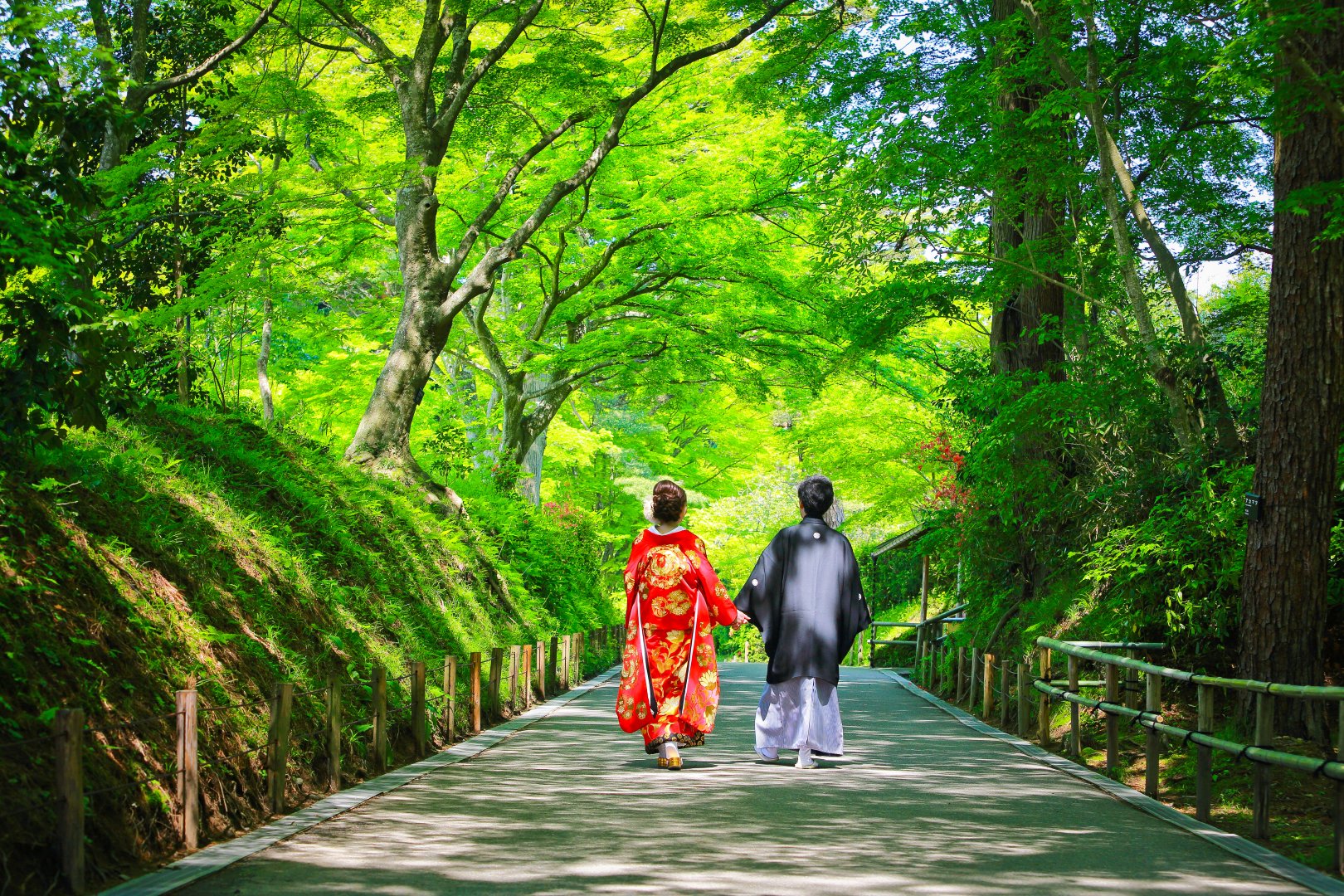
Chusonji Temple
A famous temple in Hiraizumi known for Konjikido, registered as a World Heritage site.
中尊寺|和装結婚式詳細
Moetsuji Temple
A World Heritage Site with a beautiful Pure Land Garden from the Heian Period. A Buddhist ceremony in a solemn space decorated with the natural beauty of the four seasons.
毛越寺|和装結婚式詳細Shrines and Temples of Miyagi Prefecture
Miyagi Prefecture, where Date culture is still alive, is home to Aoba Shrine and Zuiganji Temple, both associated with the Sendai clan, and Shiogama Shrine on Matsushima, one of the three most scenic spots in Japan, Miyagi Prefecture is dotted with shrines and temples that are historically and culturally important. These traditional and prestigious settings make for memorable wedding ceremonies.
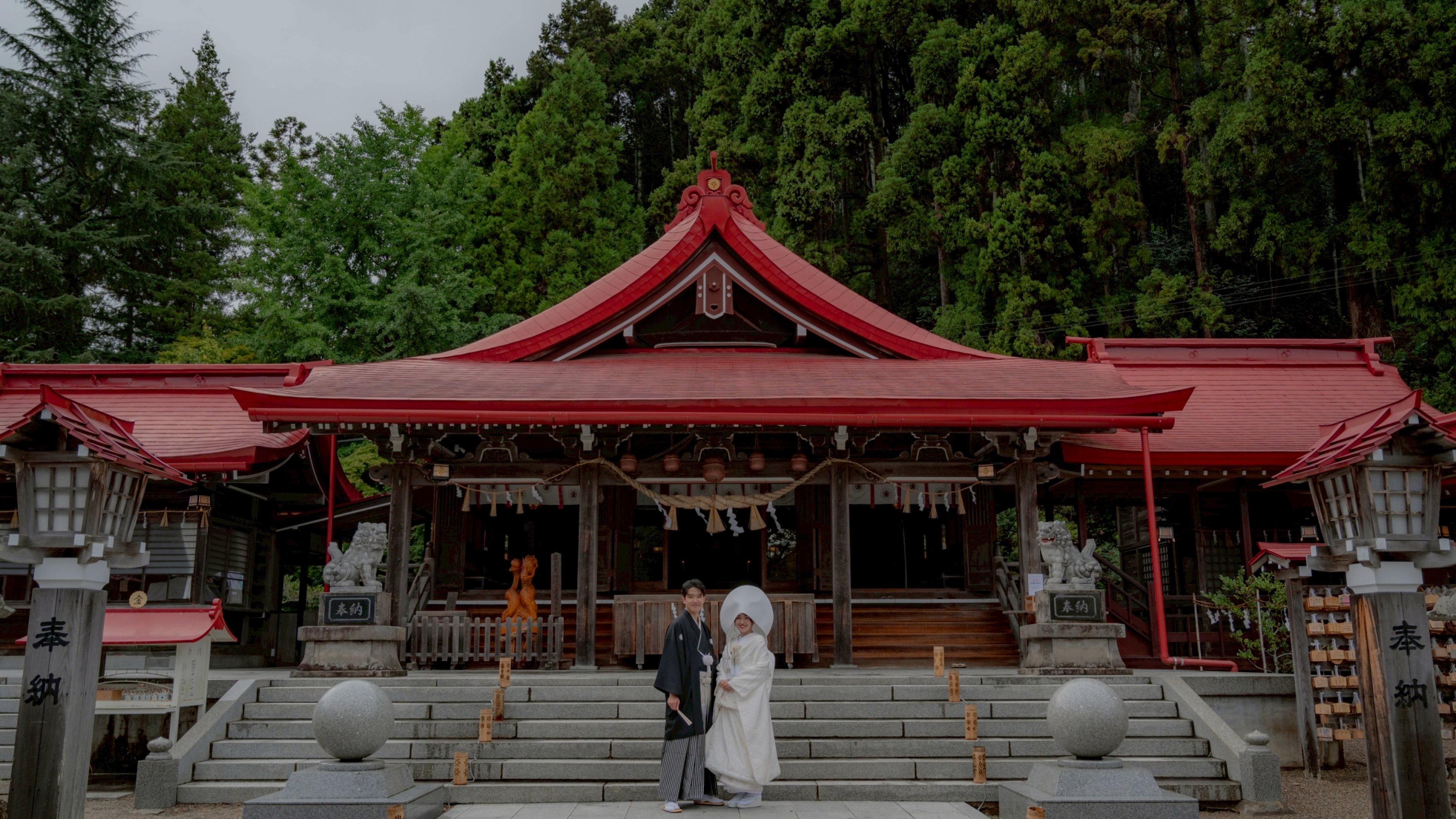
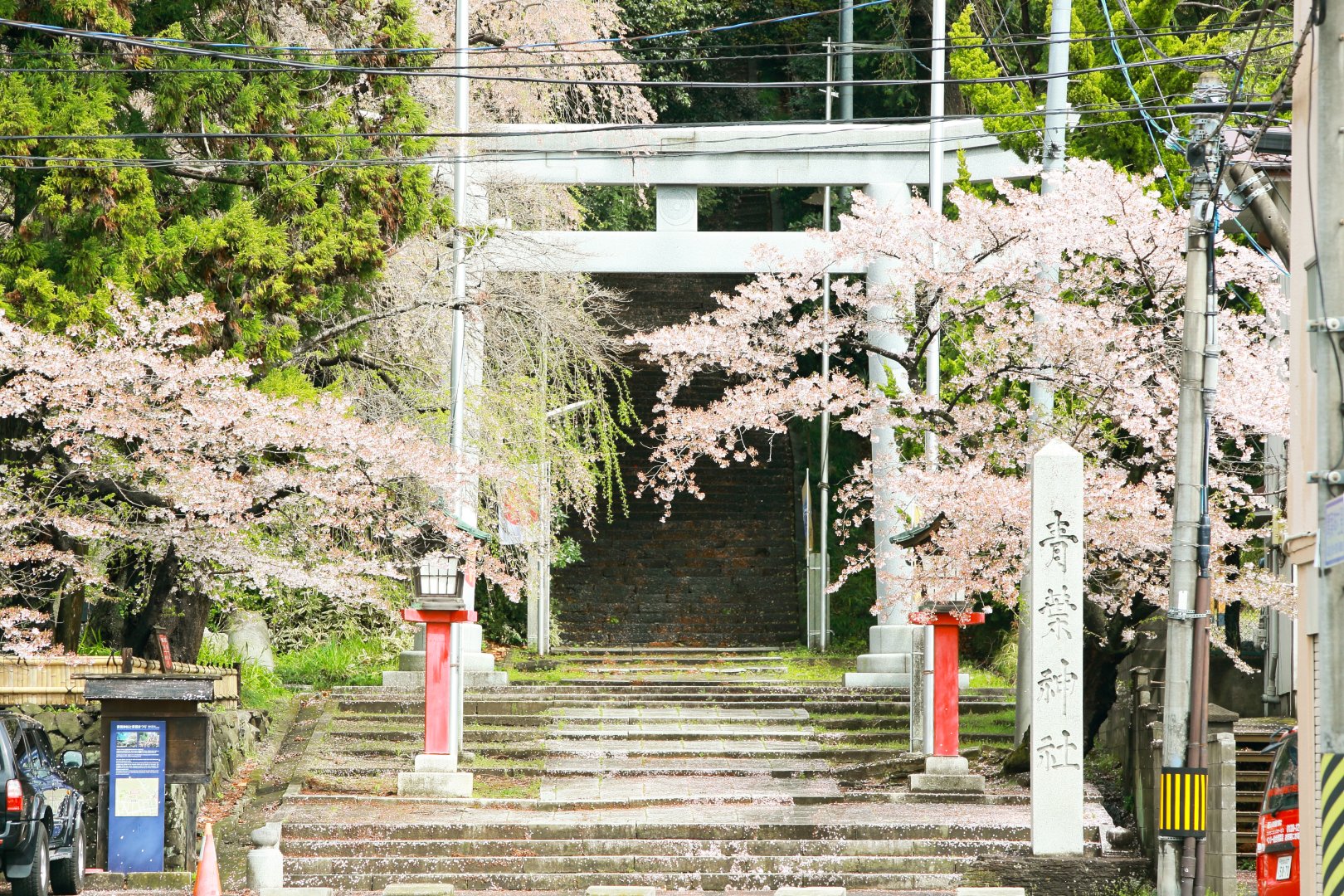
Aoba Shrine (the outer shrine of Aoba Shrine)
A shrine dedicated to Lord Date Masamune, located on a hill above the ruins of Sendai Castle. Although located in the heart of the city, a prestigious Shinto ceremony is held in a lush green setting.
青葉神社|和装結婚式詳細
Atago Shrine
This historic shrine sits on a hill overlooking the city of Sendai. It is well-loved by the local people because of its location.
愛宕神社|和装結婚式詳細
Miyagi Gokoku Shrine
A historic shrine located in Aoba Ward, Sendai City. A solemn Shinto ceremony is held in a quiet environment.
宮城縣護國神社|和装結婚式詳細
Osaki Hachimangu Shrine
This shrine is associated with the Date family and has a shrine pavilion designated as a national treasure. A Shinto ceremony is held in a prestigious, traditional style.
大崎八幡宮|和装結婚式詳細
Sendai Toshogu Shrine
Toshogu Shrine features gorgeous decorations enshrining Ieyasu Tokugawa. A prestigious wedding ceremony in the grounds surrounded by nature in each of the four seasons.
仙台東照宮|和装結婚式詳細
Shiogama Shrine
This historic shrine is located in Shiogama in Matsushima, one of the three most scenic spots in Japan. It enshrines the god of the sea and is revered as a god of good fortune.
鹽竈神社|和装結婚式詳細
Takekoma Shrine
The head shrine of Inari Shrine, of which there are approximately 280 throughout Japan. It is a shrine with a long history, known for its blessings for prosperous business and family safety.
竹駒神社|和装結婚式詳細
Howaoka Tenmangu Shrine
A shrine dedicated to Sugawara Michizane, the god of learning. It is easily accessible from Sendai Station and offers a quiet space in the city for weddings.
榴岡天満宮|和装結婚式詳細Zuiganji Temple, Matsushima
Zuiganji Temple, located in the center of Matsushima, one of the three most scenic spots in Japan, is also known as a temple associated with feudal lord Date Masamune, Zuiganji Temple is also known as a temple associated with Date Masamune, and is home to a number of national treasures and important cultural properties. A Buddhist ceremony in this solemn historical setting is an exceptional experience.
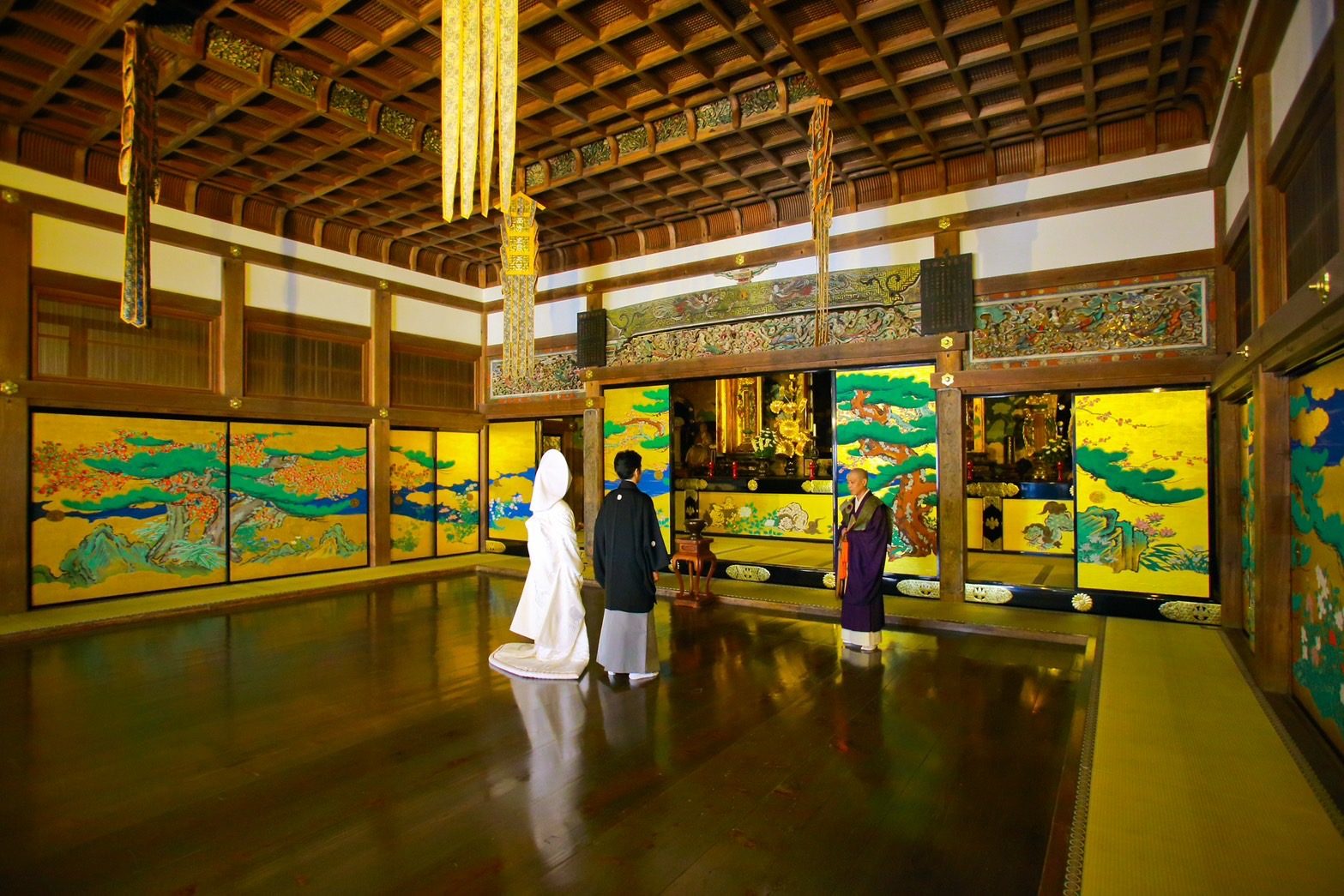
Zuiganji Temple
A temple of the Rinzai sect located in the center of Matsushima. Known as a temple associated with Date Masamune, it holds many national treasures and important cultural properties.
瑞巌寺|和装結婚式詳細Yamagata Prefecture Shrines and Temples
Yamagata Prefecture is a treasure trove of Shinto shrines and Buddhist temples, such as the Dewa Sanzan and shrines associated with the Uesugi family, where spiritual culture and history are deeply intertwined. We invite you to experience a traditional Japanese wedding in a solemn setting in harmony with the natural beauty of the four seasons.
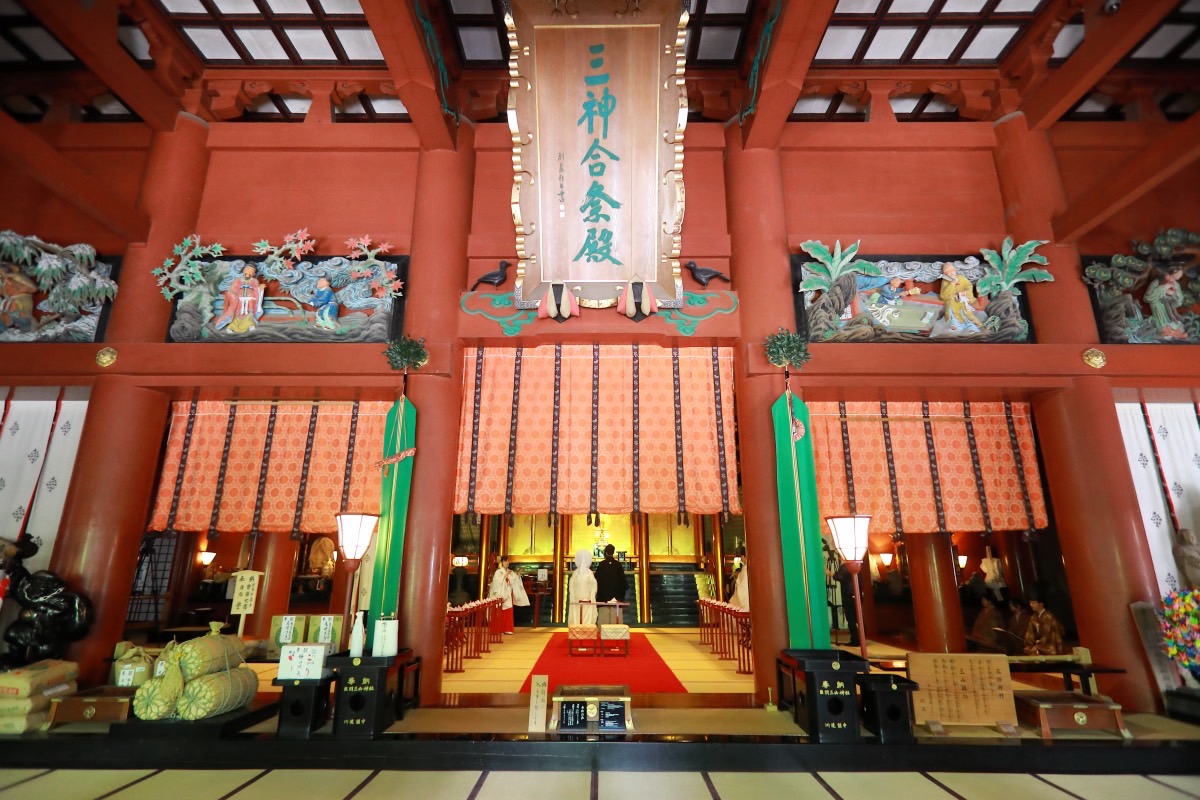
Dewa Sanzan Shrine
Tsukiyama, Haguro, and Yudono, the sacred site of Shugendo. Shinto ceremonies are held in a mystical space where nature and faith merge.
出羽三山神社|和装結婚式詳細
Shonai Shrine
The shrine is revered by the people of the region as the chief guardian of the Shonai area. A traditional Shinto ceremony is held in a solemn atmosphere.
荘内神社|和装結婚式詳細
Suwa Shrine
A historic shrine located in the center of Yamagata City. It is well-loved by local residents and surrounded by beautiful nature throughout the four seasons.
諏訪神社|和装結婚式詳細
Uesugi Shrine
The shrine is dedicated to Kenshin Uesugi, the feudal lord of Yonezawa. A formal Shinto ceremony can be held in the solemn precincts where pine trees thrive.
上杉神社|和装結婚式詳細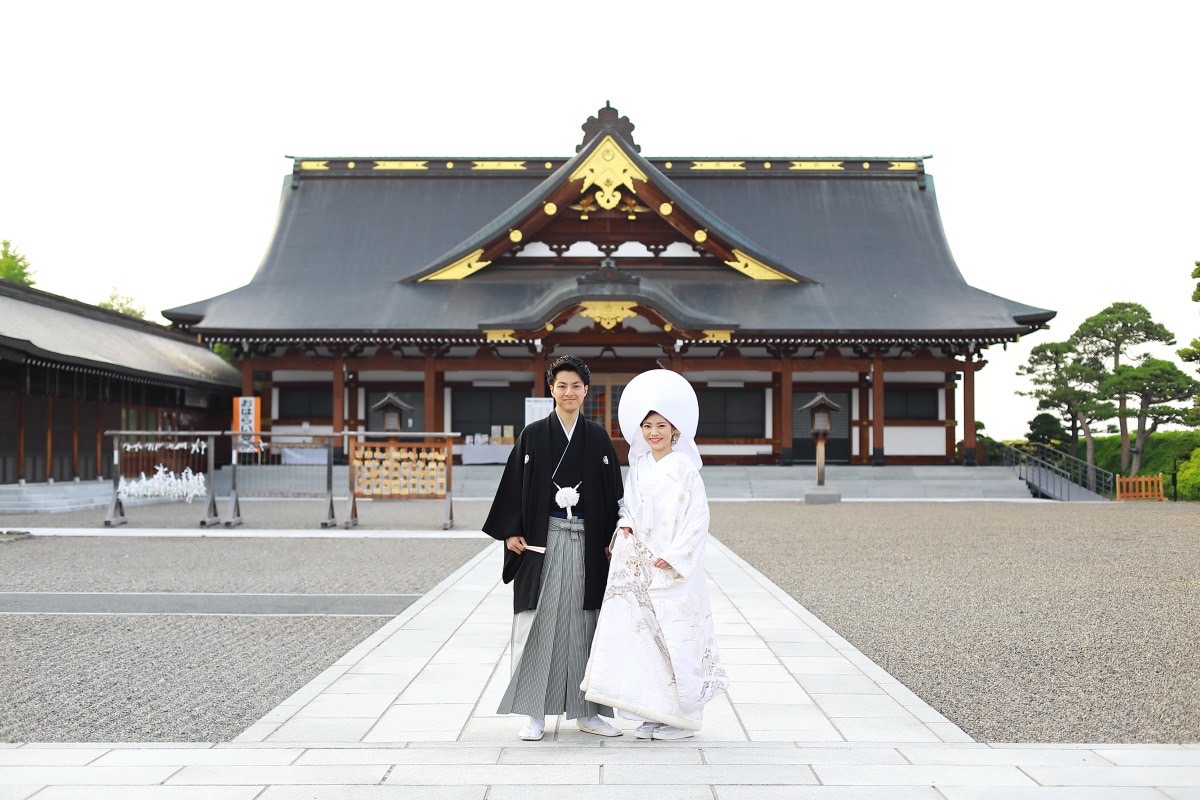
Yamagata Gokoku Shrine
A solemn shrine located in Kasumigajo Park in Yamagata City. A prestigious Shinto ceremony is held in a tranquil environment in harmony with the surrounding nature.
山形県護国神社|和装結婚式詳細Inquiries about weddings at Motsu-ji
If you have any questions or concerns about a prestigious wedding ceremony at Motsu-ji Temple,
Please feel free to contact us using the form below or by phone.
Our professional wedding planners will be happy to assist you.
Contact us by phone: 022-794-7720
(Hours: Weekdays 10:00-18:00)
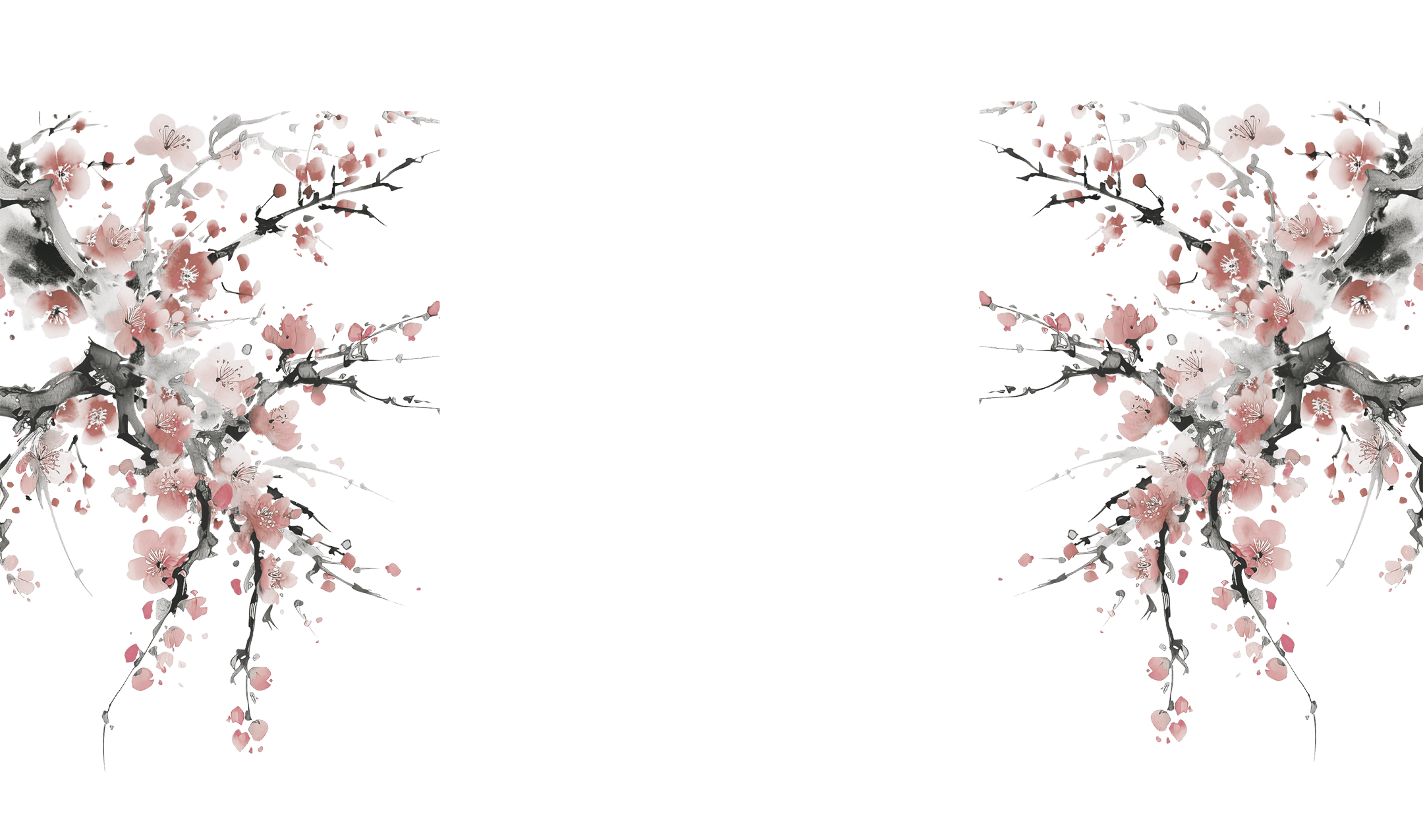
Timeless Traditions,
Endless Love
Clad in tradition,
A vow for the future.
